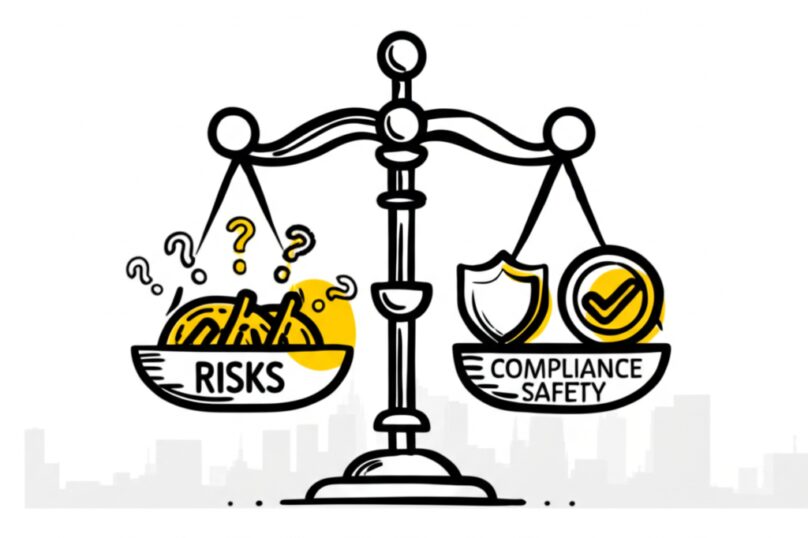Optimizing Risk Management & Compliance

Hey there, amazing business leaders!
Imagine your business as a sturdy boat sailing in the ocean. Sometimes the sea is calm, but other times, big waves (risks) can come. Also, there are rules (compliance) about how to sail safely. If you manage these waves and follow the rules well, your boat sails smoothly and reaches its goal faster!
Today, we’re going to talk about something super important for your business, whether you’re a shop owner in Chennai, a factory owner in Coimbatore, or a marketing expert in Madurai: Optimizing Risk Management & Compliance. Don’t worry, we’ll keep it super simple, like talking to a 10-year-old, with examples you see every day in Tamil Nadu!
Why is this important for YOU?
Think about these simple reasons:
- Keep Your Money Safe: Good planning stops you from losing money unexpectedly.
- Stay Out of Trouble: Following rules means no legal problems or fines.
- Build Trust: When you are careful and follow rules, people trust your business more. This means more customers!
- Grow Bigger and Better: With less worry, you can focus on making your business shine.
What are Risks & Rules (Compliance)?
Let’s break down the types of waves and rules:
- Money Risks (Financial): This is about your cash flow. What if sales drop suddenly? Or a customer doesn’t pay?
- Example: A small textile shop in Erode, “Santhosh Textiles,” keeps track of how much stock they have and how much money is coming in and going out daily, so they don’t run out of cash.
- Working Risks (Operational): This is about how your daily work happens. What if your machines break? Or your main supplier cannot deliver?
- Example: “Saravana Sweets,” a popular sweet shop in Salem, makes sure their ovens are serviced regularly so production doesn’t stop, especially during festivals.
- Law & Rule Risks (Legal & Regulatory): These are the rules set by the government. Like paying GST on time or following labour laws for your employees.
- Example: “Green Farms,” an organic farm near Vellore, makes sure they have all the right permits and follow food safety rules from the government to sell their produce.
- Name Risks (Reputational): This is about what people think of your business. What if a customer has a very bad experience and shares it everywhere?
- Example: “Aavin Milk” ensures strict quality checks on their milk. If there’s a complaint, they address it quickly to maintain their good name across Tamil Nadu.
- Computer Risks (Cybersecurity): If your business uses computers for customer details or sales, this is super important. What if someone hacks your computer system?
- Example: “Tech Solutions,” a small IT firm in Coimbatore, uses strong passwords and backs up all its client data daily to keep it safe from hackers.
Simple Steps to Manage Risks & Follow Rules:
Here’s how you can make your business safer and stronger:
Step 1: Find the Risks
Look around your business like a detective. What can go wrong?
- How to do it: Talk to your team, think about past problems, and look at what competitors face.
- Tamil Nadu Example: “Kumaran Travels,” a bus service in Trichy, asks their drivers and conductors about common issues like flat tires, engine problems, or unexpected road closures, to prepare for them.
Step 2: See How Big the Risks Are
Not all problems are equally big. Some are small, some are huge.
- How to do it: Think: “How likely is this to happen?” and “If it happens, how much will it hurt my business?”
- Tamil Nadu Example: For “Chennai Book House,” the risk of a small typo in an advertisement is less severe than a fire breaking out in their warehouse full of books. They focus more on fire safety.
Step 3: Make a Plan to Stop or Reduce Risks
Once you know the risks, make a plan to deal with them.
- How to do it:
- Avoid: Stop doing something risky.
- Reduce: Make the risk smaller.
- Transfer: Get insurance to cover the risk.
- Accept: Some small risks might be okay.
- Tamil Nadu Example: “Fancy Footwear,” a shoe manufacturer in Ranipet, reduces the risk of material shortages by having two or three different suppliers for leather, instead of just one. They also have fire extinguishers ready.
Step 4: Check Regularly
Risks and rules change. Keep checking to make sure your plans are still working.
- How to do it: Have weekly meetings, look at reports, and do yearly reviews.
- Tamil Nadu Example: “Velu’s Vadai Shop” in Coimbatore checks their oil quality and stove safety every single morning before opening, to make sure everything is safe and clean.
Step 5: Make Rules Part of Everyone’s Work
Everyone in your team should know and follow the rules.
- How to do it: Teach your team, put up posters, and set a good example yourself.
- Tamil Nadu Example: At “Ganga Hospitals” in Thanjavur, every nurse and doctor is trained on patient safety rules and hygiene, making sure everyone knows how important it is.
Wrapping It Up
See? Managing risks and following rules isn’t hard when you take it step by step. It’s like wearing a helmet while riding a bike – it keeps you safe and lets you enjoy the ride without fear!
By putting these simple steps into action, just like many successful businesses in Tamil Nadu, your brand will become stronger, more trusted, and ready to achieve amazing things.
Start today and build a super safe and super successful business!
